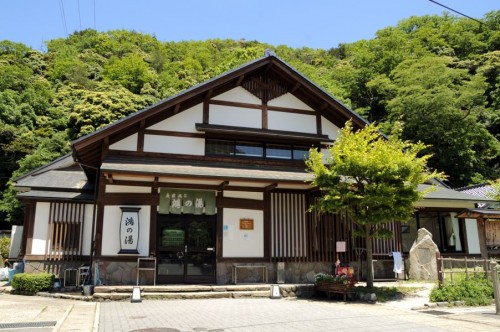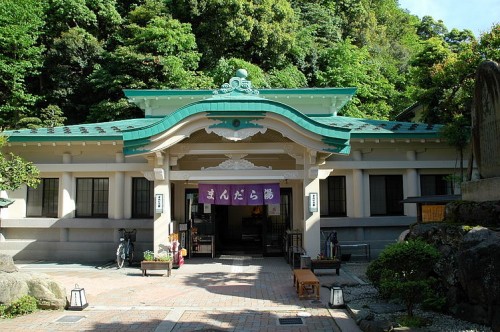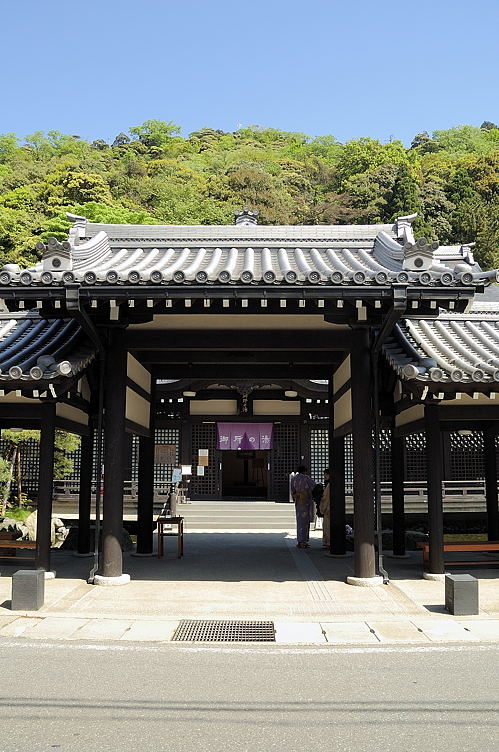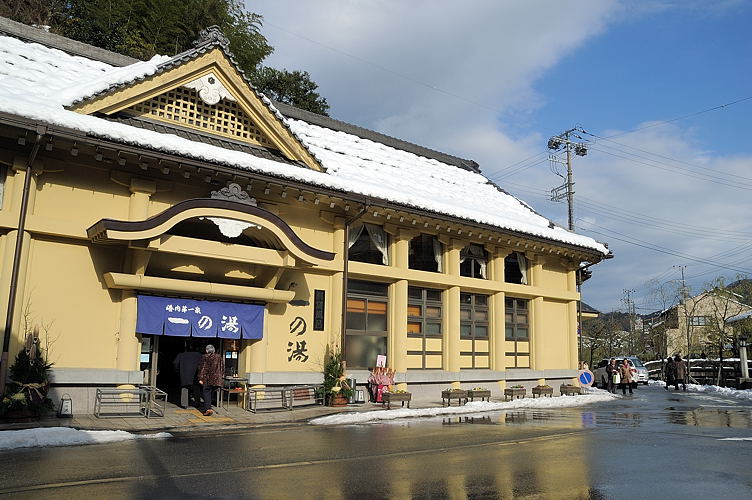The history of Kinosaki Onsen is long.
In the days of Emperor Jomei (629 to 641), the hot spring was discovered because of the wounded stork healed its wound with hot water. It is said that the Kinosaki Onsen was opened by Douchijounin.
Since then, it has been told as “Tajima-no-yu” by Kokon Waka Collection and Masukagami, and has been loved by many people.
The legend of discovery is handed down to the old hot spring resort.
There are also legends in the sotoyu (outdoor hot springs) at Kinosaki Onsen, which are introduced below.
Sato-no-Yu (Fureai no Yu)- Natural regression
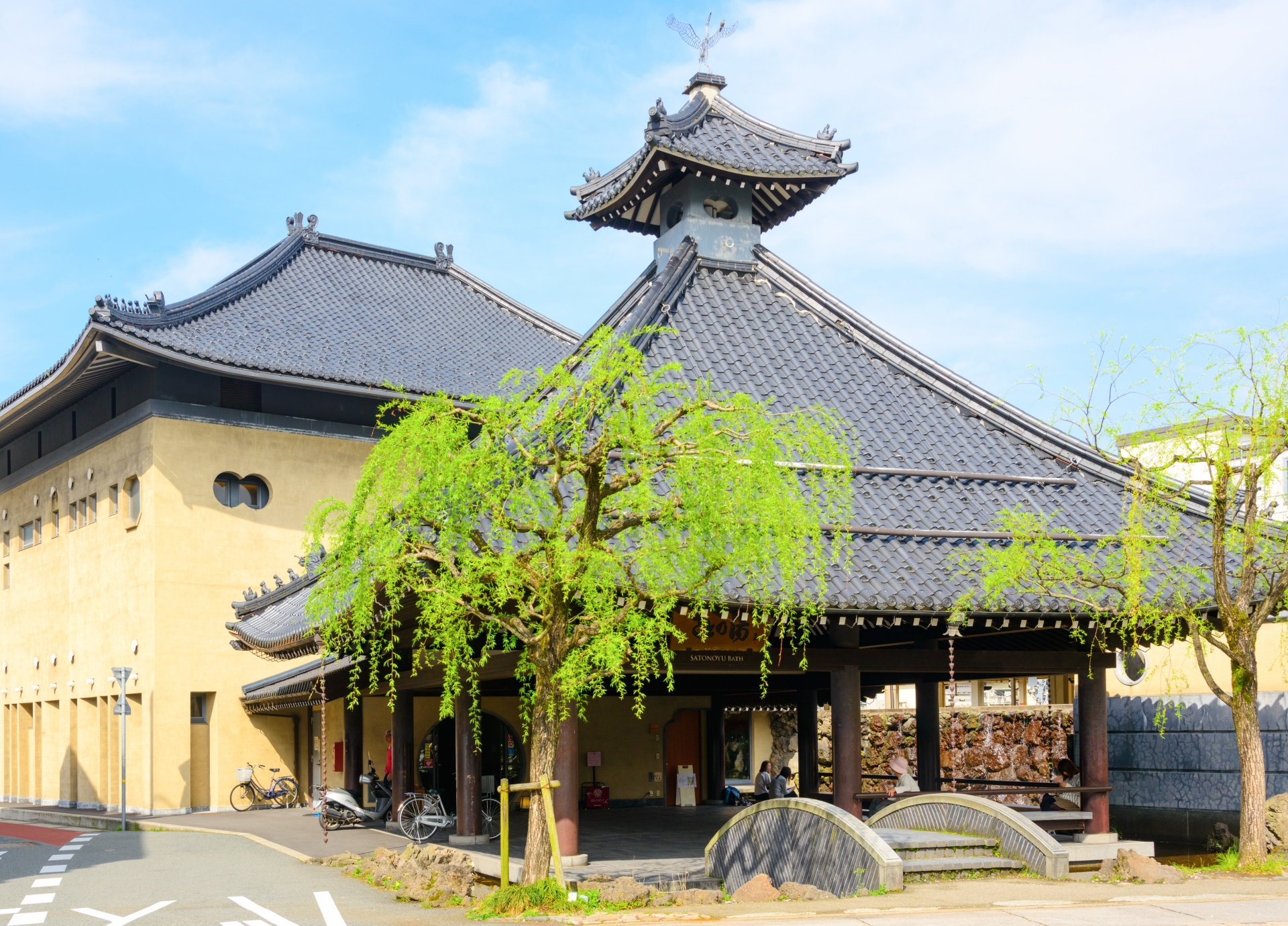
Kinosaki, where hot springs have been springing up since 1400 years ago, has been nurtured and inherited a culture that soothes human mind and body.
Sotoyu “Satonoyu”, which was added to the Kinosaki Onsen station building, opened with the modernity of the Kinosaki tradition.
It has a modern taste and ease of use, and is more for locals than tourists. The charm of “Satonoyu” is that you can enjoy many bathtubs.
Among them, the scenery from the open-air bath stands out.
In a bright time, you can overlook the Maruyama River, so you can relax while watching the river flow and birds flying in the sky.
The profit is “natural regression”. You can enjoy the unique atmosphere of Kinosaki, such as the scent of herbs and the sound of waterfalls.
Information
Location : 290-36 Kinosakicho Imazu, Toyooka, Hyogo 669-6103
Business hours : 13:00 – 21:00
Regular holiday : Monday
Admission fee : Adult: 800 yen Child: 400 yen
Web site : http://www.kinosaki-spa.gr.jp/information/yumeguri/4.html
Map :
Kouno-yu – Invite Happiness
It is the oldest open water in sotoyu. In the days of Emperor Jomei (629 to 641), it was reported that storks were found to have healed their wounds in hot springs and named after this story.
The profits are the luck of a married couple and longevity.
Information
Location : 610 Kinosakicho Yushima, Toyooka, Hyogo 669-6101
Business hours : 7:00 – 23:00
Regular holiday : Tuesday
Admission fee : 600 yen for adults, 300 yen for children (children from 1 year old to elementary school students)
Web site : http://www.kinosaki-spa.gr.jp/information/yumeguri/4.html
Map :
Mandala-yu (One wish for life)
It is said that in 717, it was springed out by the founder of Onsen-temple, the mandala of Douchijounin (a thousand-day prayer).
Around 800 years later, it suddenly springed up and became hot water, but as a result of the practice that Nissin Jouning, a Kyoto priest who often came together, wrote a mandala and calmed it down to the bottom of the fountain, it became a suitable temperature in a few days. It is said to have recovered.
There is a monument with a story of this origin in the front yard of Mandala-yu.
The profits are prosperous business and the rich harvest.
Information
Location : 565 Yushima Kinosaki Town Toyooka, Hyogo 669-6101
Business hours : 15:00 – 11:00
Regular holiday : Wednesday
Admission fee : 600 yen for adults, 300 yen for children (children from 1 year old to elementary school students)
Web site : http://www.kinosaki-spa.gr.jp/information/yumeguri/4.html
Map :
Gosho-no-yu (Beauty)
In the history story of the North-Southern era, “Masukagami”, there is an article that Ankimon Inn, the sister of Emperor Gohorikawa, entered the bath in 1267.
The event comes from the name “Gosho no Yu”.
Information
Business hours : 7:00 – 23:00
Regular holiday : Every first and third Thursday
Admission fee : 800 yen for adults 400 yen for children
Web site : http://www.kinosaki-spa.gr.jp/information/yumeguri/4.html
Ichino-yu (Invite fortune)
In the middle of the Edo period, Shutoku Kagawa, who was a younger brother of Ryozan Goto, the founder of hot spring medicine, recommended this hot water, which was called Shinyu at that time. In his book “Ippon Dorakusen”, it was named “Ichinoyu”.
Daimyo is said to have entered this hot spring.
The monument in Ichino-yu’s garden is based on a book written by Dr. Goichi Fujinami, the author of modern hot springs.
The profits are passing exams and road safety.
Information
Location : 415-1 Kinosakicho Yushima, Toyooka, Hyogo 669-6101
Business hours : 7:00 – 23:00
Regular holiday : Wednesday
Admission fee : 600 yen for adults 300 yen for children
Web site : http://www.kinosaki-spa.gr.jp/information/yumeguri/4.html
Map :
Yanagi-yu (Get a child)
It was named “Yanagi-yu” because it came from under the willow tree transplanted from Scenic West Lake in China.
The hot water is said to have had a significant effect on wounds and swelling.
Since the guardian deity of Yanagi-yu is the Kishi-Bijin god, it is said that it will benefit the child and the safe delivery.
Information
Location : 647 Kinosakicho Yushima, Toyooka, Hyogo 669-6101
Business hours : 15:00 – 23:00
Regular holiday : Thursday
Admission fee : 600 yen for adults 300 yen for children
Web site : http://www.kinosaki-spa.gr.jp/information/yumeguri/4.html
Map :
Jizo-yu (Save people)
During the Edo period, many villagers used this hot spring.
The origin of the name “Jizoyu” is that Jizoson came from the source of spring, and since then, Jizoson has been enshrined in the garden.
The profits are family safety and to appease an aborted fetus.
Information
Location : 796 Kinosakicho Yushima, Toyooka, Hyogo 669-6101
Business hours : 7:00 – 23:00
Regular holiday : Friday
Admission fee : 600 yen for adults 300 yen for children
Web site : http://www.kinosaki-spa.gr.jp/information/yumeguri/4.html
Map :
Summary
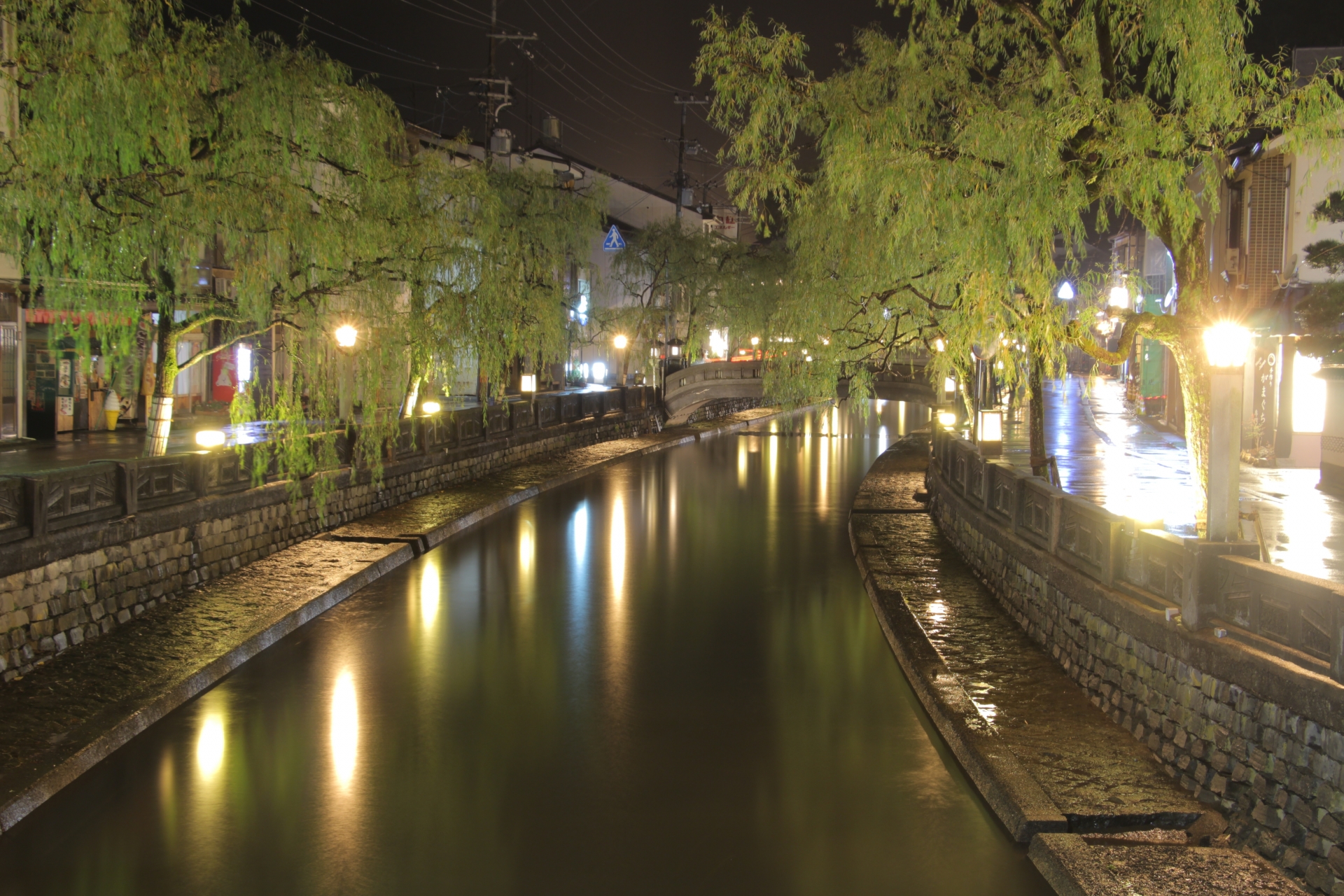
Each sotoyu has its own meaning, and they carry their own luck.
It can be said that enjoying the difference of the sotoyu is the best part of traveling around Kinosaki Onsen.

